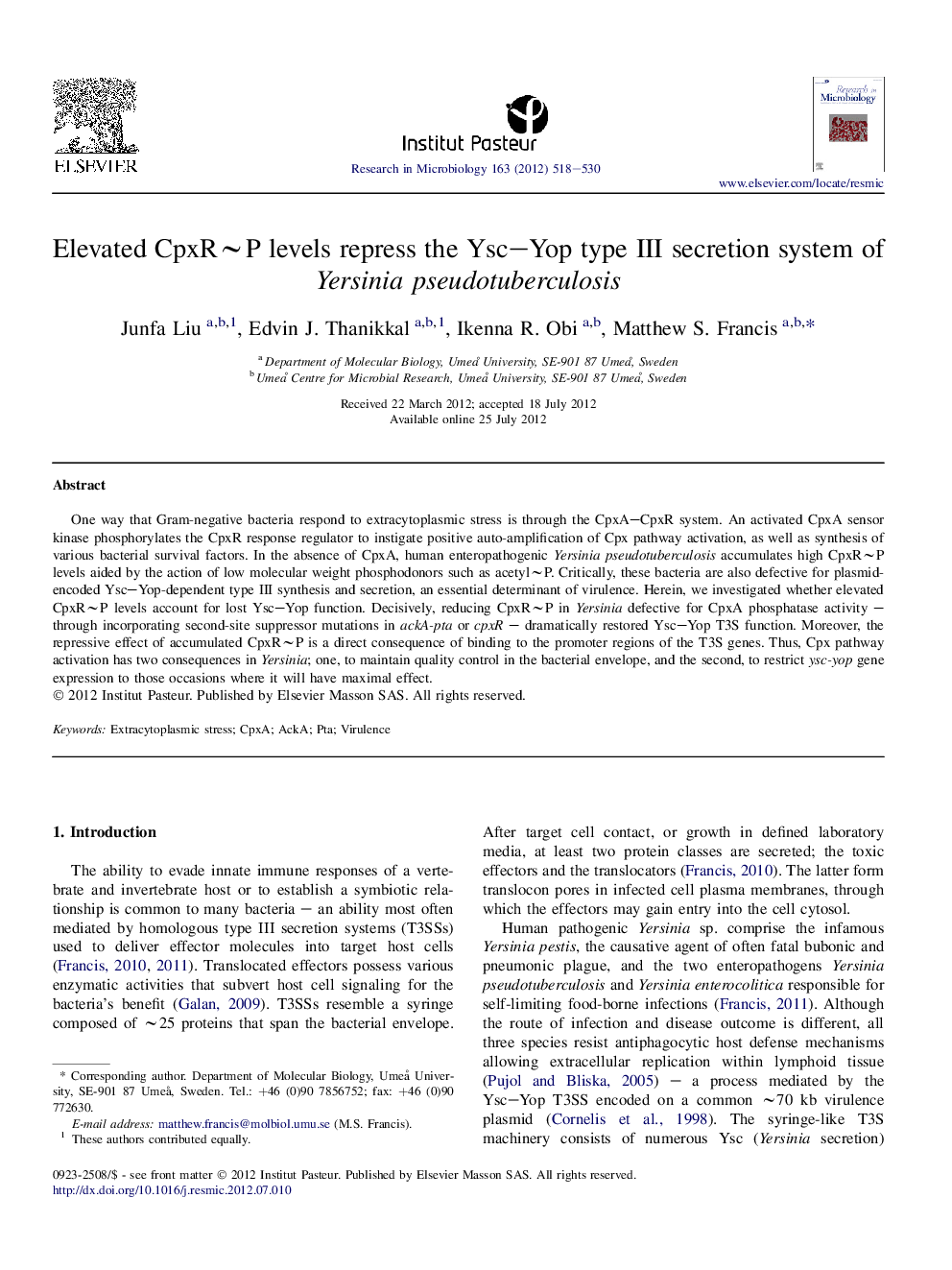| Article ID | Journal | Published Year | Pages | File Type |
|---|---|---|---|---|
| 4358653 | Research in Microbiology | 2012 | 13 Pages |
One way that Gram-negative bacteria respond to extracytoplasmic stress is through the CpxA–CpxR system. An activated CpxA sensor kinase phosphorylates the CpxR response regulator to instigate positive auto-amplification of Cpx pathway activation, as well as synthesis of various bacterial survival factors. In the absence of CpxA, human enteropathogenic Yersinia pseudotuberculosis accumulates high CpxR∼P levels aided by the action of low molecular weight phosphodonors such as acetyl∼P. Critically, these bacteria are also defective for plasmid-encoded Ysc–Yop-dependent type III synthesis and secretion, an essential determinant of virulence. Herein, we investigated whether elevated CpxR∼P levels account for lost Ysc–Yop function. Decisively, reducing CpxR∼P in Yersinia defective for CpxA phosphatase activity – through incorporating second-site suppressor mutations in ackA-pta or cpxR – dramatically restored Ysc–Yop T3S function. Moreover, the repressive effect of accumulated CpxR∼P is a direct consequence of binding to the promoter regions of the T3S genes. Thus, Cpx pathway activation has two consequences in Yersinia; one, to maintain quality control in the bacterial envelope, and the second, to restrict ysc-yop gene expression to those occasions where it will have maximal effect.
